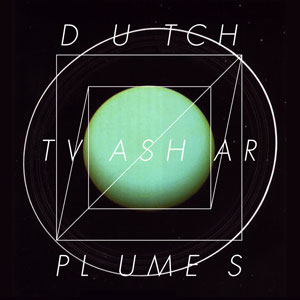Lee Gamble Dutch Tvashar Plumes
Earlier this year, Lee Gamble released a mini-album titled Diversions 1994-1996, which was composed of […]

Earlier this year, Lee Gamble released a mini-album titled Diversions 1994-1996, which was composed of samples from a collection of old jungle mixtapes. It was, as he explained in an interview with FACT, an attempt to recreate the hypnagogic, post-club state in which half-remembered melodies and rhythms twirl in your memory. Diversions was a romantic effort, the labor of an artist who has spent many meaningful nights in a club. Gamble’s follow-up, Dutch Tvashar Plumes, is comparatively cynical and dark. It is computer art, informed by dance music, kin to Actress, Oneohtrix Point Never, and Mark Fell.
Granted, Dutch is less expansive than recent works by those artists, or perhaps just less welcoming. Gamble’s computer sounds like it was puckering as it helped him spit out the album’s 10 patchwork tracks. There is a sour, acidic taste throughout. When familiar low-end rhythms appear—and they do so only infrequently—they fail to envelop and comfort the tracks. Everything stings, everything scrapes, and this ensures Dutch is a caustic, uncomfortable listen.
Impressively, Gamble accomplishes this without dipping into any sounds that might be considered “noise.” Instead, he laces Dutch with lots of springy, high frequency sounds; parts of the album seem dedicated to turning Gamble’s hi-pass filter into a weapon. Sampled voices show up—during the final, soupy minutes of “Nowhen Hooks,” for example—but they are heavily obscured. There is so little comfort throughout Dutch; it’s mostly just hot-circuit Tetris and pissy, hissy valves.
Gamble’s commitment to unease is impressive, but it’s difficult to tell what exactly Dutch is working towards. (And it must be working toward something. No one embraces these sounds without some kind of agenda.) Unlike some of his more academically inclined peers (and unlike his previous release), Gamble provides virtually no road map for Dutch. In his press material, Gamble describes his current creative process as, roughly, digital synthesis that leads to “disfigurations and reconfigurations.” The word “disfigurations” is key: Dutch isn’t a treatise on modern dance music so much as a perversion of it, a series of structures and sounds bent to Gamble’s loony will.
This leaves Dutch untethered, though. It will appeal primarily to fans of dance and electronic music, but only those with a desire to see their object of affection whipped a little. Ultimately, Dutch is less vibrant and, well, relevant than dance deconstructions by Actress or Oneohtrix, but it’s also a lot harder to pin down, and there’s a rogue-ish appeal to that.

